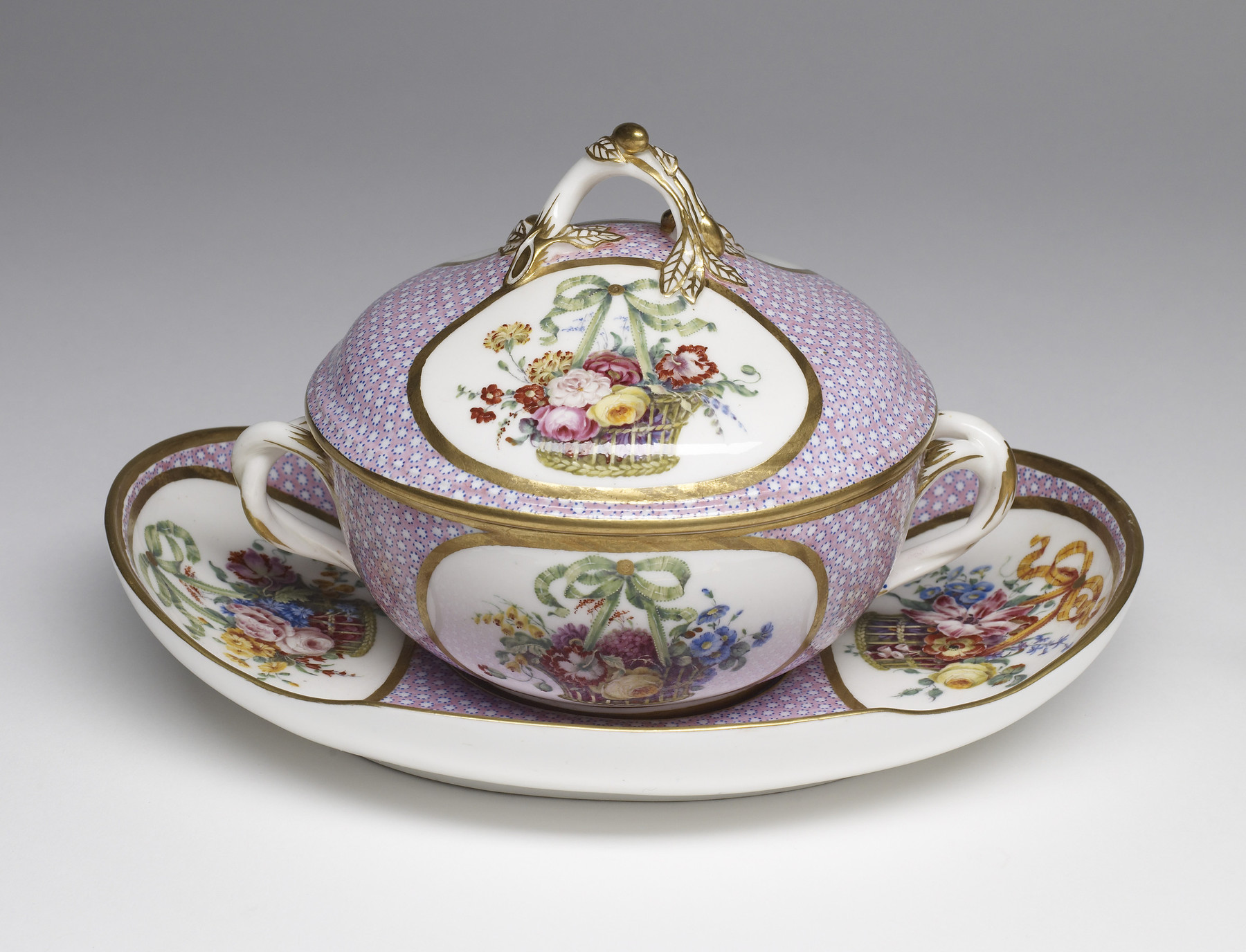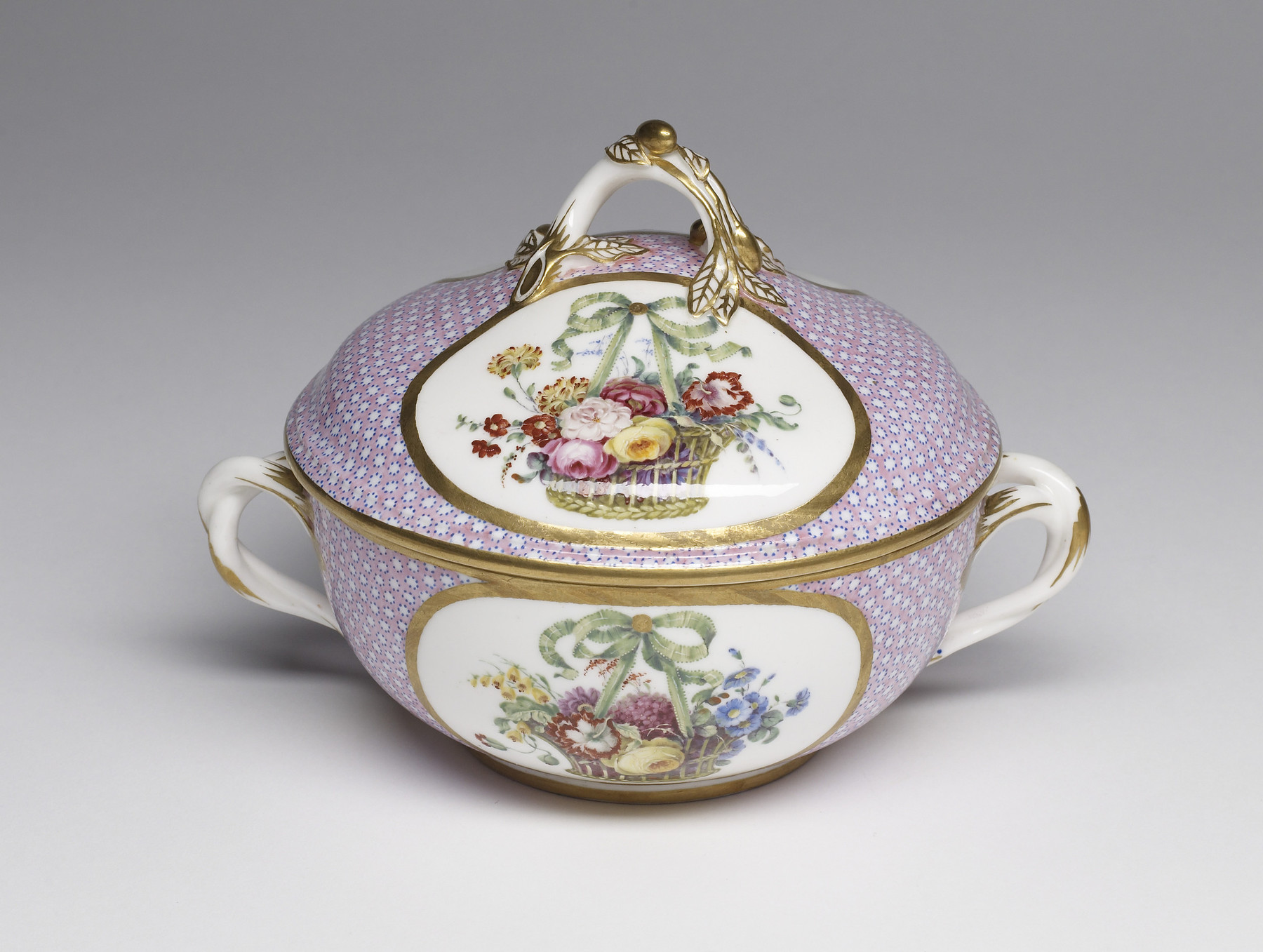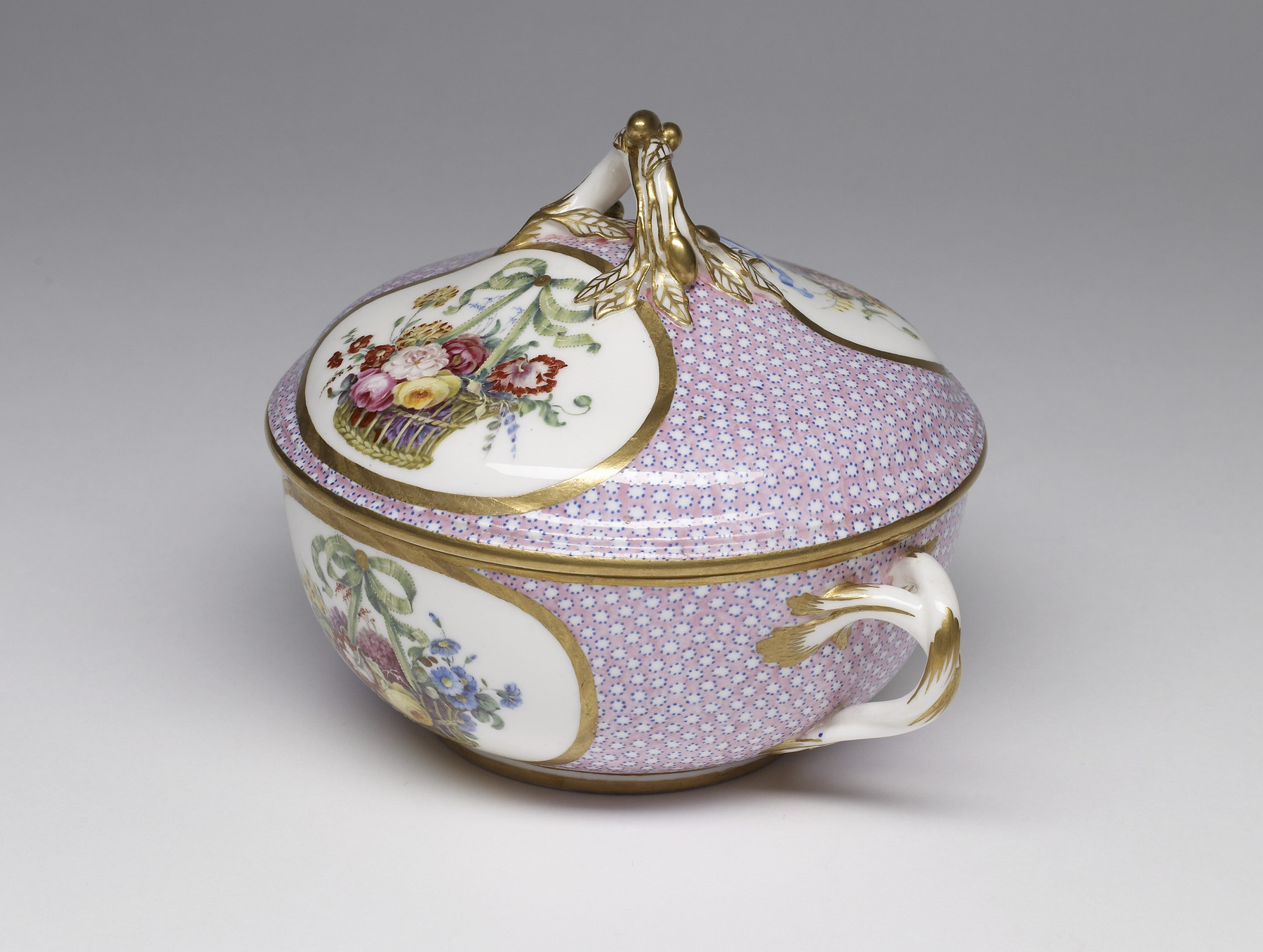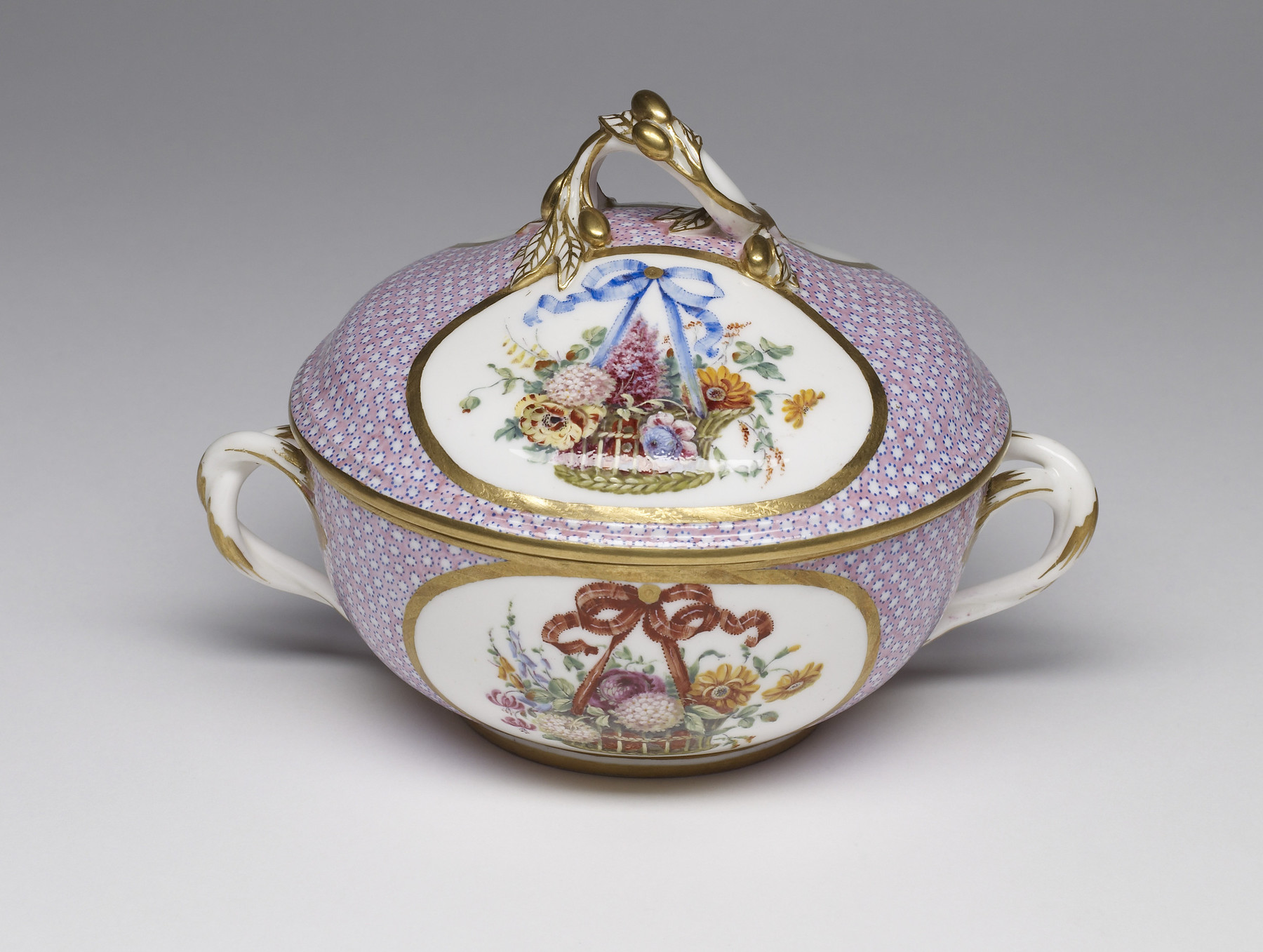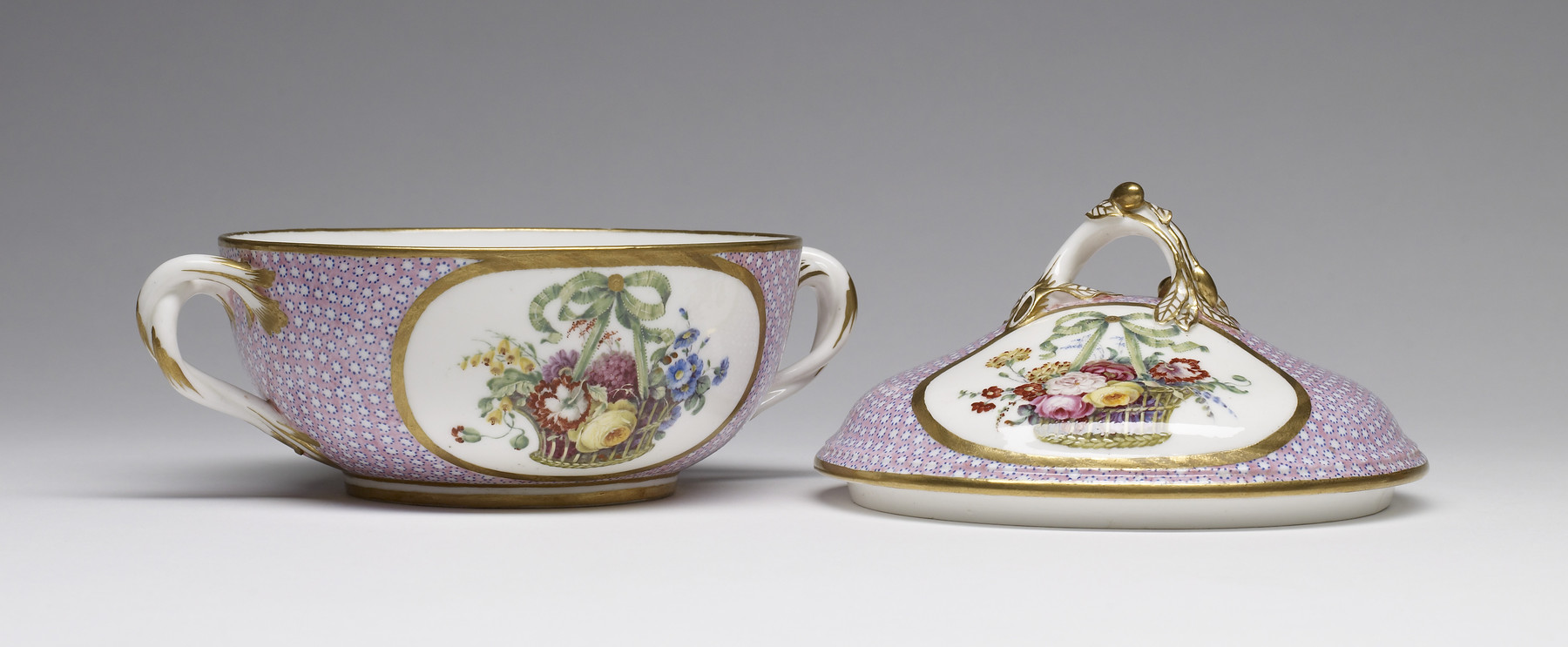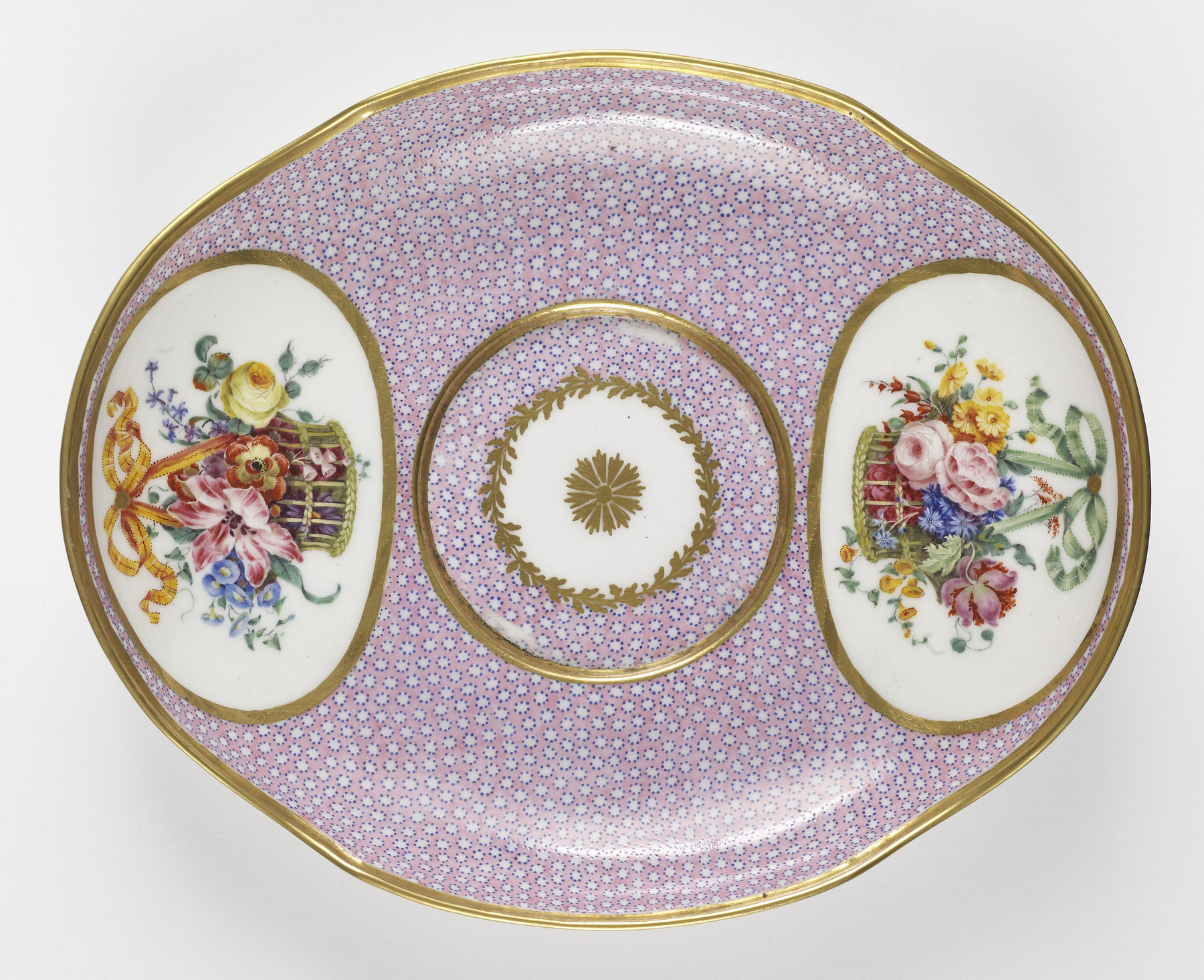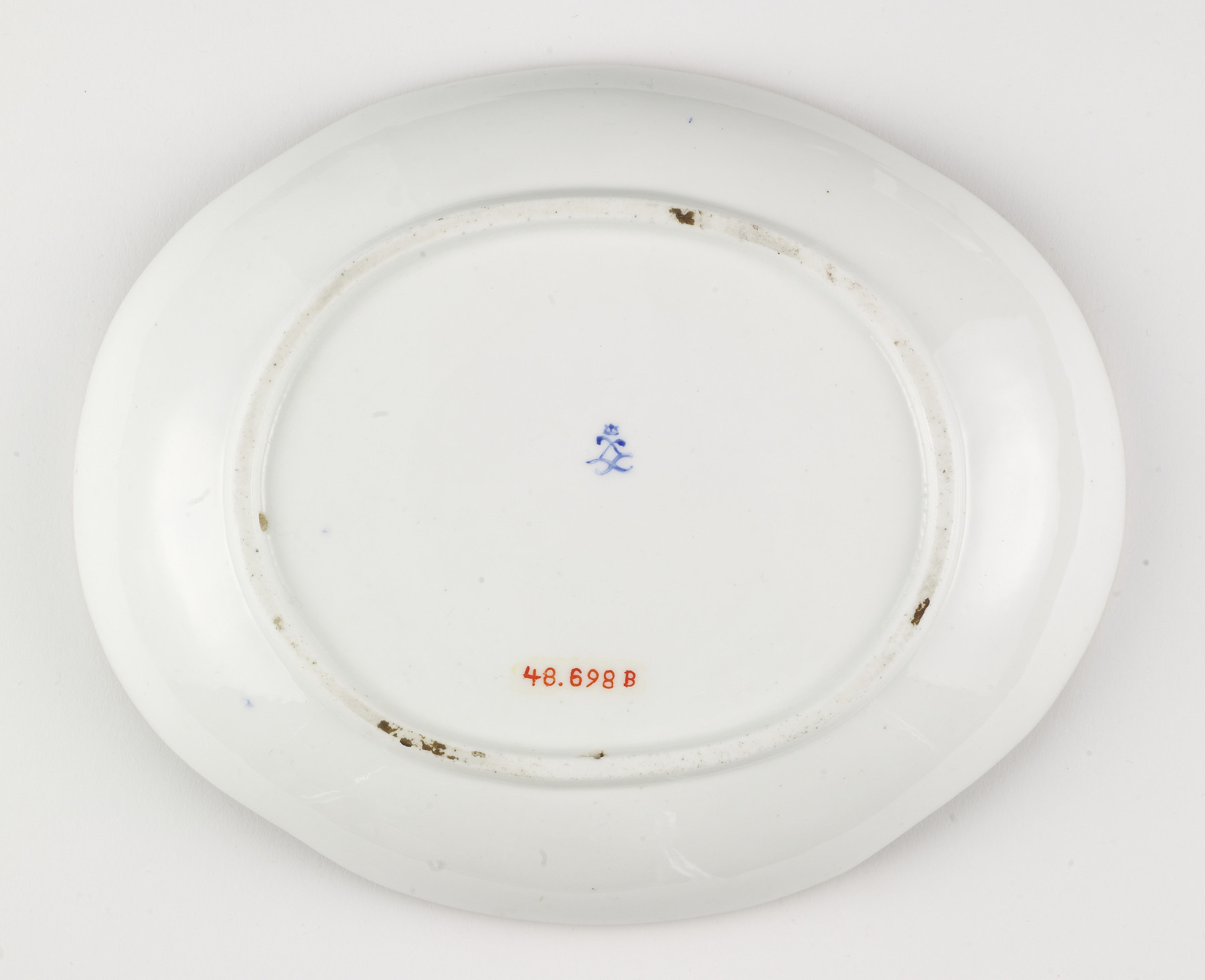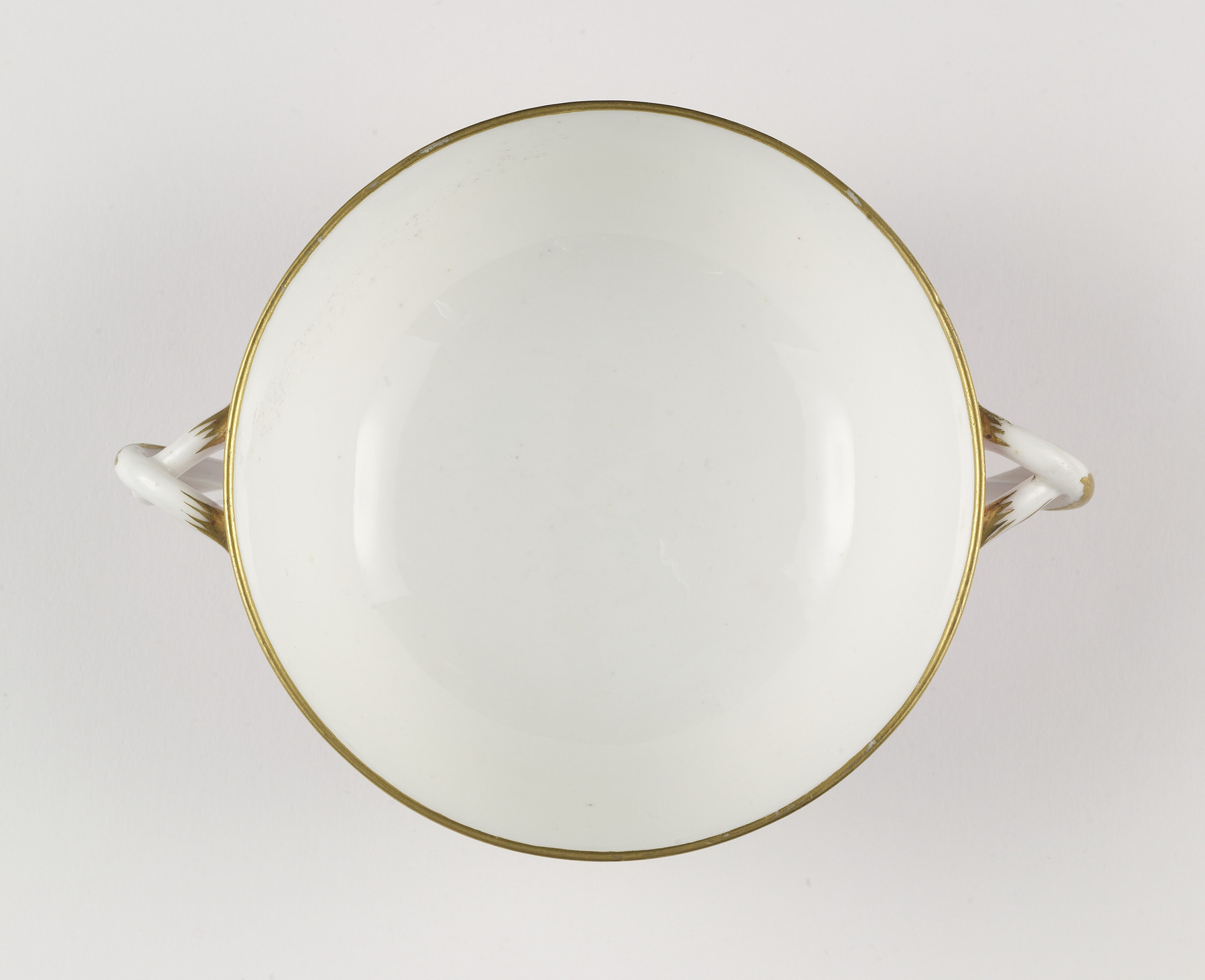Covered Bowl and Plateau (écuelle ‘nouvelle forme’ et plateau ‘ovale’)
(18th and 19th Centuries )
Aristocrats would have used this matching set of porcelain dishes to consume soups and broths during their daily toilette, a lengthy dressing ritual performed before an audience. Using the two handles, a person would drink from the bowl and, when finished, cover it with the lid to keep the liquid warm and free from powders, which were liberally applied to an individual’s hair, face, and body during the dressing ritual. The plateau, or large saucer, was for bread – toasted or soaked in broth -- that accompanied the hot, restorative liquids. This particular "écuelle et plateau" features a pink pointillé ground with two reserves, or areas reserved for imagery, on each separate piece. All reserves have a white ground and feature baskets of assorted flowers.
Inscription
Provenance
Provenance (from the French provenir, 'to come from/forth') is the chronology of the ownership, custody, or location of a historical object. Learn more about provenance at the Walters.
William T. or Henry Walters, Baltimore; by bequest to Walters Art Museum, 1931.
Geographies
France, Sèvres (Place of Origin)
Measurements
Overall Bowl, Plate, and Lid H: 4 15/16 × W: 8 7/8 × D: 7 3/16 in. (12.5 × 22.5 × 18.3 cm); Bowl and Lid H: 4 1/2 × W with Handles: 6 3/4 × D: 5 1/8 in. (11.5 × 17.1 × 13 cm); Bowl H: 2 3/16 ×W with Handles: 6 3/4 × D: 5 1/8 in. (5.6 × 17.1 × 13 cm); Plate H: 1 9/16 × W: 8 7/8 × D: 7 3/16 in. (4 × 22.5 × 18.3 cm); Lid H: 3 × W: 5 3/8 in. (7.6 × 13.6 cm).
Credit Line
Acquired by William T. or Henry Walters
Accession Number
In libraries, galleries, museums, and archives, an accession number is a unique identifier assigned to each object in the collection.
In libraries, galleries, museums, and archives, an accession number is a unique identifier assigned to each object in the collection.
48.698

